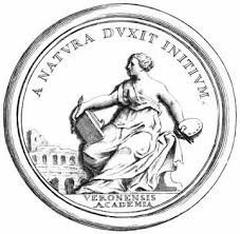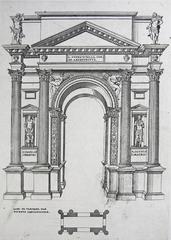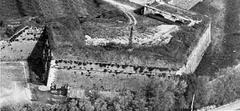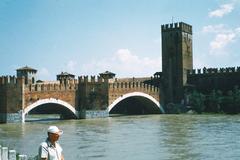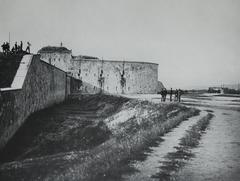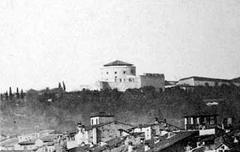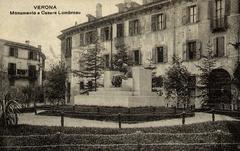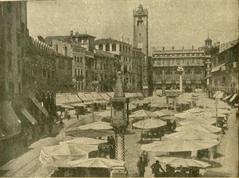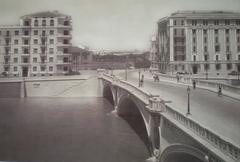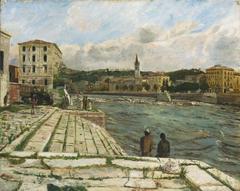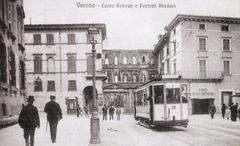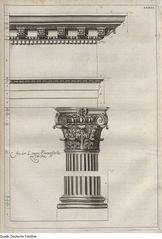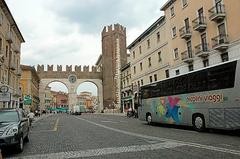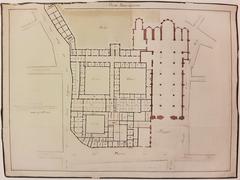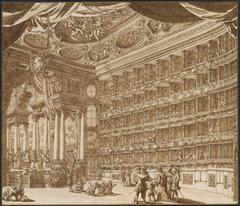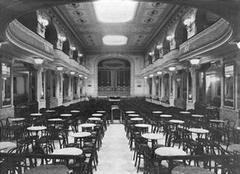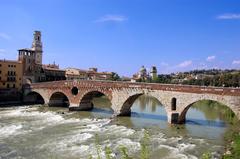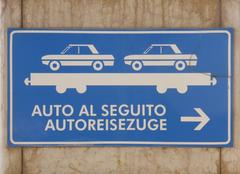University of Verona Visiting Guide: Hours, Tickets, and Nearby Attractions
Date: 14/06/2025
Introduction
Nestled within the UNESCO-listed city of Verona, Italy, the University of Verona (Università degli Studi di Verona) stands as a vibrant symbol of academic achievement and cultural integration. Established during the intellectual resurgence of the 1950s and achieving autonomy in 1982, the university has grown into a dynamic institution known for multidisciplinary research, innovative teaching, and a lively student community. While its primary function is educational, the university’s historic buildings, public events, and proximity to iconic landmarks such as the Arena di Verona and Castelvecchio Museum offer visitors a unique cultural experience. This comprehensive guide will help you plan your visit—detailing university history, practical visitor information, campus highlights, nearby attractions, and essential travel tips. For the latest schedules, event updates, and visitor guidelines, consult the University of Verona official website and related resources (Wikipedia, Yocket, Erasmus Play).
Contents
- Introduction
- Historical Overview
- Campus Highlights and Visiting Information
- Academic Excellence and Student Life
- Accessibility, Facilities, and Travel Tips
- Events and Community Engagement
- Nearby Attractions
- FAQs
- Summary and Planning Resources
- Sources
Historical Overview
Foundations and Growth
The origins of the University of Verona can be traced back to the early 1950s, when a group of Catholic intellectuals founded the “Ludovico Antonio Muratori” Free High School of Historical Science and launched the academic journal Nova Historia. These initiatives laid the groundwork for a university that would reflect Verona’s heritage as a crossroads of culture and history (Wikipedia).
In 1959, Professor Giorgio Zanotto, then mayor of Verona, advocated for the establishment of a Faculty of Economics and Commerce—a proposal that found support from local and regional authorities and the University of Padua. By 1963, this faculty was formally established as a branch of the University of Padua, soon joined by new departments in medicine, law, and the humanities (Yocket, Pavaedu).
The pivotal year was 1982, when the institution gained full autonomy, officially becoming the University of Verona. This independence fueled rapid growth in academic offerings and campus development, positioning the university as a leading center for research and education in northern Italy (Wikipedia).
Campus Highlights and Visiting Information
Locations and Architectural Gems
The University of Verona is primarily housed in two main districts:
- Veronetta: Home to humanities and social sciences, this campus features the iconic Santa Marta Complex, a 16th-century granary transformed into a modern university facility (univr.it). The Santa Marta site regularly hosts exhibitions and cultural events.
- Borgo Roma: Dedicated to medicine and sciences, this campus features state-of-the-art research centers and teaching hospitals.
Additional facilities are located in Legnago, Vicenza, Bolzano, Trento, and Rovereto.
Visiting Hours and Access
- Santa Marta Complex and Main Campuses: Open to visitors Monday through Friday, 9:00 AM to 6:00 PM.
- Guided Tours: While regular guided tours are not standard, special tours of Santa Marta and select buildings are organized for events or upon request through the Welcome Office (univr.it).
- Tickets: General campus access is free. Certain exhibitions, conferences, or events may require pre-registration or a ticket. Always consult the university events calendar for current details.
- Virtual Tours: Interactive and virtual campus tours are available via the university’s website.
Photographic and Cultural Highlights
- Santa Marta Complex: Architectural blend of Renaissance and modern design.
- Polo Zanotto: Main lecture hall with scenic views of the Adige River.
- Campus Grounds: Lively student areas, riverside walks, and adjacent historic streets.
Academic Excellence and Student Life
As of 2025, the university enrolls approximately 28,000 students across 12 departments, including economics, law, medicine, humanities, foreign languages, computer science, biotechnology, and more (UniRank). The university is recognized for its research achievements and consistently ranks among Italy’s top public universities (Yocket).
Internationalization and Support
- Erasmus+ and Mobility Programs: The university actively participates in European and global exchange programs (Erasmus Play).
- Support for International Students: The Welcome Office assists with visas, accommodation, language support, and orientation (univr.it).
- Courses in English: Several graduate and select undergraduate programs are taught in English.
Campus Facilities
- Libraries and Study Spaces: Multiple libraries, digital resources, and study rooms.
- Cafeterias and Social Spaces: On-site dining and gathering areas.
- Cultural Events: Festivals, film screenings, and public lectures, including the Veronetta Contemporanea Festival (univr.it).
- Accessibility: Most buildings are equipped for visitors with disabilities.
Accessibility, Facilities, and Travel Tips
- Public Transport: Well-served by city bus lines; Verona Porta Nuova train station is about 2 km from the main campus. The Verona Card offers discounted transit and museum access (Visit Verona).
- Parking: Limited; public transport or walking is recommended.
- Visitor Services: Multilingual staff, free Wi-Fi in public areas, tourist information desks, and accessible pathways.
- Best Times to Visit: During the academic year for a lively atmosphere; spring and autumn for cultural events.
Events and Community Engagement
The University of Verona is a cultural driver in the city, hosting academic conferences, public lectures, and collaborating with local institutions on events like the Vinitaly wine fair and Verona Opera Festival (Experto Italy). Many activities are open to the public; check the university events page for schedules.
Nearby Attractions
The university’s central location makes it easy to explore Verona’s historic treasures:
- Arena di Verona: A Roman amphitheater renowned for its opera festival (Verona Arena).
- Castelvecchio Museum: Medieval castle with art collections.
- Piazza delle Erbe: Ancient marketplace surrounded by vibrant architecture.
- Juliet’s House: The legendary setting of Shakespeare’s Romeo and Juliet.
- Valpolicella Wine Region: Perfect for day trips and tastings (World History Journal).
Frequently Asked Questions (FAQs)
Q: Can I visit the University of Verona as a tourist?
A: Yes—while guided tours are not routine, visitors are welcome to explore campus grounds, attend public events, and visit exhibitions. Check the official website for special tour availability.
Q: Are there tickets or entrance fees?
A: General entry is free. Some exhibitions or events may require tickets or pre-registration.
Q: Is the university accessible for people with disabilities?
A: Most buildings are equipped with ramps, elevators, and accessible restrooms. Contact the university for specific needs.
Q: Are there English-language services and programs?
A: Yes. Many staff and students speak English, and several degree programs are offered in English.
Q: How do I reach the university from Verona’s train station?
A: The main campus is about 2 km from Verona Porta Nuova station, easily reached by bus or on foot.
Q: Where can I find virtual tours or event calendars?
A: Both are available on the university’s official site.
Tips for a Memorable Visit
- Check the university’s event calendar to coincide your visit with public lectures or exhibitions.
- Explore nearby cafes and student hangouts in Veronetta or around Piazza delle Erbe.
- Use public transport for easy access to all campuses and city attractions.
- Respect campus etiquette, especially during exam periods.
- Capture photos at Santa Marta, Polo Zanotto, and along the Adige River.
Summary and Planning Resources
The University of Verona offers a blend of historical intrigue, academic energy, and cultural engagement within a city famed for its artistic and architectural legacy. Although not a conventional tourist attraction, its campuses and events provide an authentic slice of local life. Pair your university visit with nearby landmarks like the Arena di Verona, Juliet’s House, and the Castelvecchio Museum for a comprehensive Verona experience. For guided tours, event details, and visitor support, consult the university’s Welcome Office and Verona’s tourism portals.
Download the Audiala app for curated travel guides and real-time event updates, and follow the university on social media for insider tips.
Sources
- This guide references official university resources, travel guides, and cultural databases for accuracy and up-to-date information:
- University of Verona Wikipedia page, 2025
- Yocket University of Verona Rankings, 2025
- Pavaedu University of Verona Overview, 2025
- University of Verona Official Website, 2025
- Experto Italy Verona City Guide, 2025
- Erasmus Play Verona Guide, 2025
- Wemakescholars University of Verona Scholarships, 2025
- Along Dusty Roads Visiting Verona Tips, 2025
- Visit Verona Official Tourism, 2025
- World History Journal: Verona – A City of History, Culture and Resilience, 2025
- PlanetWare Verona Attractions Guide
- The Crazy Tourist – Best Things to Do in Verona
- Verona Arena
- Verona Travel Guide
